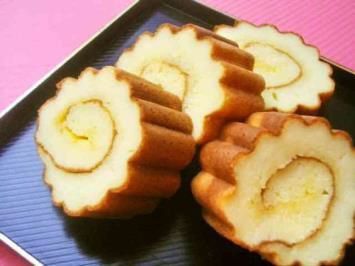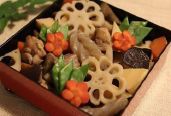Osechi: Wishing for a Year of Health and Wellbeing for the Family
Osechi are made with a wish for health and long life, wealth and prosperity for the family.
 |
These shrimp are the most eye-catching residents of the jūbako.
|
 |
The numerous eggs of nishin (herring) roe are eaten as a charm, in the hopes that your descendants will be as numerous as the little eggs themselves. Flavored with soy sauce, their salty flavor makes them popular as a snack with sake. |
 |
These cheerful yellow datemaki are a sweet rolled omelette popular with children. They look like rolled books, so they are made with a wish for success and achievement in academic pursuits. |
 |
Lotus root, with its many windows, is eaten with the wish that one will see the future with clarity. The root slices are carved into the shapes of flowers to match the cheerful, celebratory atmosphere of the holiday. |
These and many other dishes of myriad color and shape, and myriad different meanings, are combined to make the osechi. And, although it’s difficult to fully explain in English, a lot of wordplay surrounding the dishes is also utilized, playing around with the pleasing ring and uniform syllables of words like medetai (welcome/desirable), mame (hardworking), and yorokobu (to rejoice). As well, the colors red and white feature prominently in Japanese New Year decorations, with red warding away evil and white representing cleansing. The nested jūbako are often 4 or 5 levels tall, so osechi can fit quite a lot of food.
Coming next, we introduce one more necessary meal, mochi rice cakes, for Japanese New Year.
